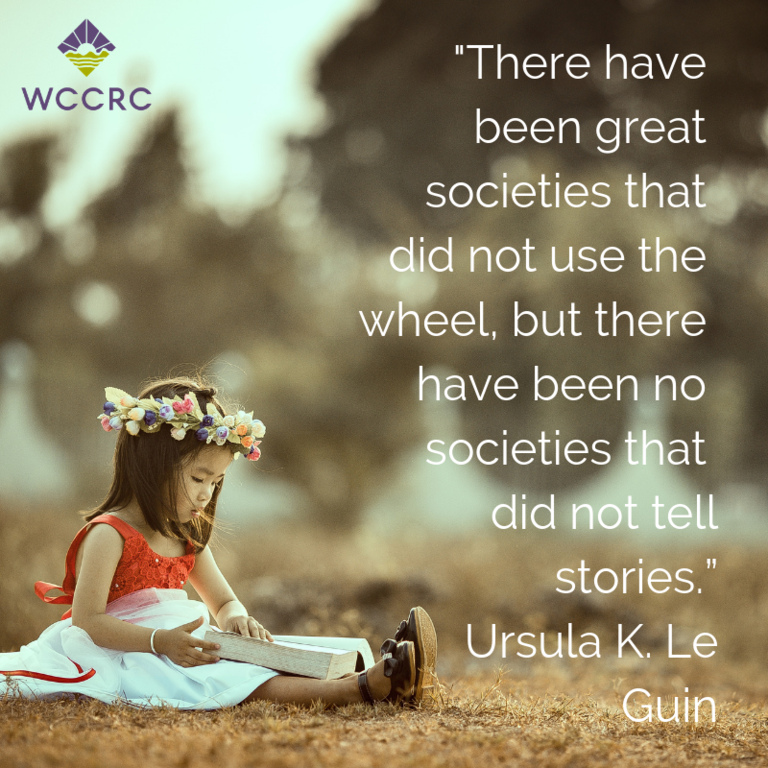National Indigenous Peoples' Day: The power of stories and storytelling.

The First Nations, Inuit, and Metis of Canada have rich traditions of storytelling that serve multiple functions in their communities. According to the First Peoples Principles of Learning, “learning is embedded in memory, history, and story.” There is a story for everything. Stories are told to teach, inform, inspire and entertain. Oral traditions are the backbone of Indigenous knowledge transfer and storytelling is the method by which much is shared. Storytelling serves to connect individuals and communities to their place and time as well as each other. Stories are also used to teach history, cultural etiquette, and spiritual beliefs. At the heart of every story is a lesson in relationship; whether relationship with self, others, or environment.
ECE teachers are also concerned with creating relationships and an environment that connects children to themselves, their communities, time, place, and each other. Storytelling is a good place to start.
One of the most powerful things about stories is their ability to be created, revised, retold, forgotten, and revived. Stories cross the boundaries of time and place; allowing them to offer perspectives that are both timely and timeless. Stories offer children experiences, choices, and outcomes to safely reflect on and learn from. Stories let us see through others’ eyes and learn from their experience. Stories also build resilience. In the workshop, The Power of Storytelling and Its Relationship to Resiliency, April Martin-Ko refers to neurological studies that show that storytelling “not only promotes early literacy and healthy child development, it is also a protective factor in resiliency.”
Storytelling is universal. Stories can be personal or shared. They can be about real or fantastical events. They can be long or short. But regardless of the other factors, telling stories is a very positive way for teachers to help children build relationships and become resilient.
For as long as we remember, stories have been used to transmit knowledge, pass down histories, cultures, and languages. No matter where in the world you are from; everyone has a story to tell.
How to tell stories:
-
Tell stories that are yours to tell.
-
Tell about your family, your experiences.
-
Tell stories that were shared with you.
-
Tell your favourite stories.
-
Tell them over and over.
-
Tell stories to help your students find their place cognitively, physically, and spiritually in this world.
-
Tell stories that form relationships.
-
If you don’t know a story or want to tell a story that belongs to someone else, ask:
- Ask them to tell the story.
- Ask them to teach you the story.
- Ask if it is ok to share - Remember that especially as we walk a path of Truth and Reconciliation, it is important that we share stories respectfully and with consideration (especially stories from other cultures).
*In her November workshop at Surrey Options CCRR, The Power of Storytelling and Its Relationship to Resiliency, April Martin-Ko began with this quote from Ursula K. LeGuin
Article by Cassidy Taylor, MLIS.
